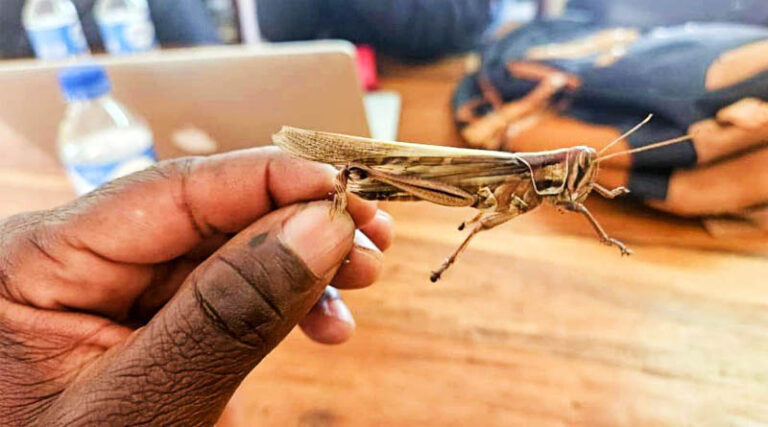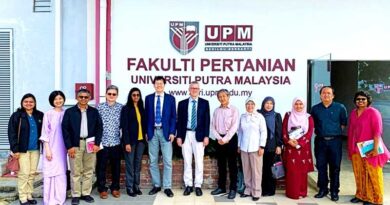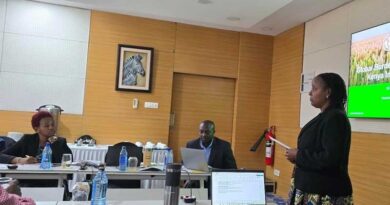
CABI Supports Steps To Implement Response Plan To Tackle Devastating Outbreak Of Red And African Migratory Locusts In Zambia
18 July 2025, Zambia: CABI is supporting steps to implement a sustainable response plan to help tackle devastating outbreaks of red and African migratory locusts in Zambia which have affected crops across the country’s Western, Central, and Southern Provinces.
Since March 2025, swarms of red locust (Nomadacris septemfasciata) and African migratory locust (Locusta migratoria) have been attacking crops including maize, rice, millet, sugarcane, and wheat, as well as impacting protected wetlands. The insects continue to pose a serious threat to Zambia’s agricultural industry.
But help is available by using an environmentally friendly specific isolate of a fungus called Metarhizium acridum as part of an Integrated Pest Management (IPM) plan which also includes chemical pesticides.
Comprehensive response plan to better prepare for future outbreaks
The latest multiagency response, which includes FAO, the Zambia Agriculture Research Institute (ZARI), and the International Red Locust Control for Central and Southern Africa (IRLCO-CSA), has seen Metarhizium acridum used in Western Province.
CABI facilitated a response plan write shop and recommended developing a comprehensive response plan to better prepare for future outbreaks. ZARI and IRLCO-CSA led on training of agricultural extension staff to help them identify red locusts, conduct surveillance and monitoring as well as understand their biology and ecology for sustainable management.
The training, held in Mongu, Western Province, was opened by Mr Akapelwa Simomo, the Permanent Secretary, Western Province, who emphasized its crucial role in aligning with the government’s agricultural agenda, specifically through capacity building and institutional strengthening.
He further stressed the importance of investing in early warning and surveillance for red locusts, acknowledging the vital role the new response plan will play in outbreak preparedness in Zambia.
Impact on smallholder farmer livelihoods and food security
Dr Fernadis Makale, Scientist, Invasive Species Management, CABI, said, “The red locust is a migratory invasive crop pest that has a devastating impact on cash and subsistence crops which are vital for smallholder farmer livelihoods and food security.
“The training conducted in partnership served as an important foundation for developing a comprehensive response plan that includes an early warning system and ways of using biological control agents as part of an Integrated Pest Management Plan.
“Overall, the training aimed at bolstering Zambia’s preparedness capacity for red locusts as well as other significant pests.”
Current outbreak had been exacerbated by the drought experienced last year
Léna Durocher-Granger, Project Scientist, Entomologist at CABI, who also took part in the training, said current outbreaks have been exacerbated by the drought experienced last year in the whole country allowing a big area for nesting sites where water bodies would have been found usually.
The crowded populations of red locust then turned into migratory swarms damaging thousands of hectares of maize, rice, wheat, and millet.
Red locusts can cover up to 200km per day, and as high as 2,000m above ground. Adults remain sexually immature until the onset of the rainy season in October and November. Eggs are then laid in pods of around 20-100 eggs at the beginning of the rainy season in November and December.
Activity of the of hoppers and adults vary greatly during over 24 hours depending on the temperature – affecting proper management time before they start moving to another location. It is easier to manage them when they are inactive early in the morning.
Ms Durocher-Granger said next steps include conducting the training and write shop for Southern and Central provinces and discussing with partners the prospect of a wider research project to manage red locust.
Also Read: The Rising Menace of Fake Agri-Inputs in India: A Threat to Agriculture, Farmer and Food Security
📢 If You’re in Agriculture, Make Sure the Right People Hear Your Story.
From product launches to strategic announcements, Global Agriculture offers unmatched visibility across international agri-business markets. Connect with us at pr@global-agriculture.com to explore editorial and advertising opportunities that reach the right audience, worldwide.






